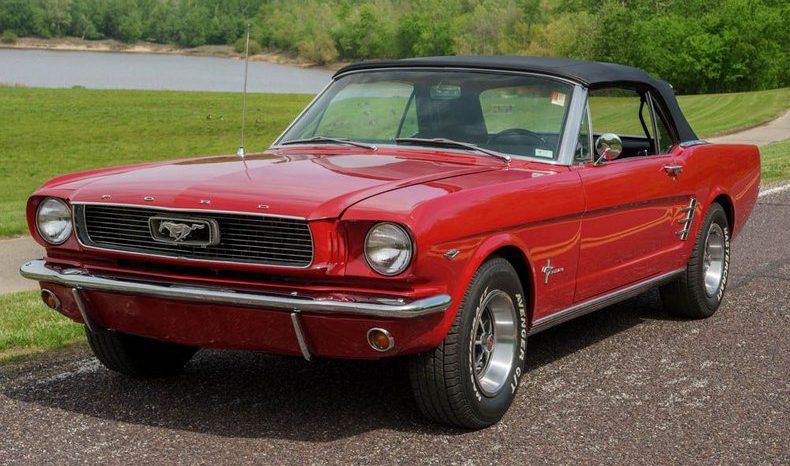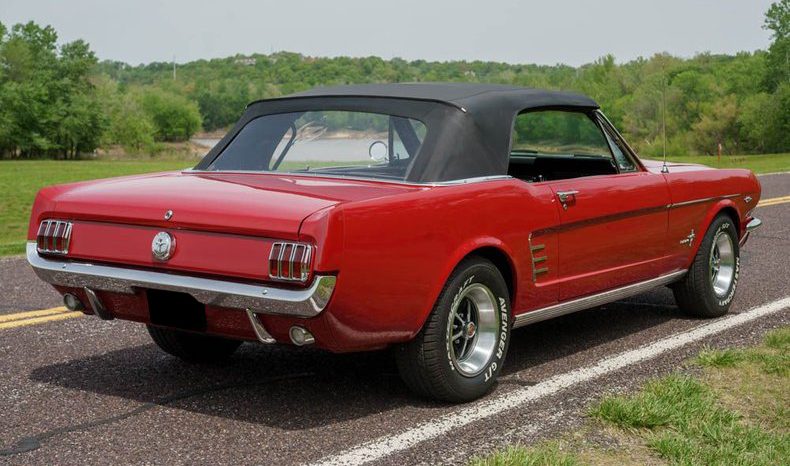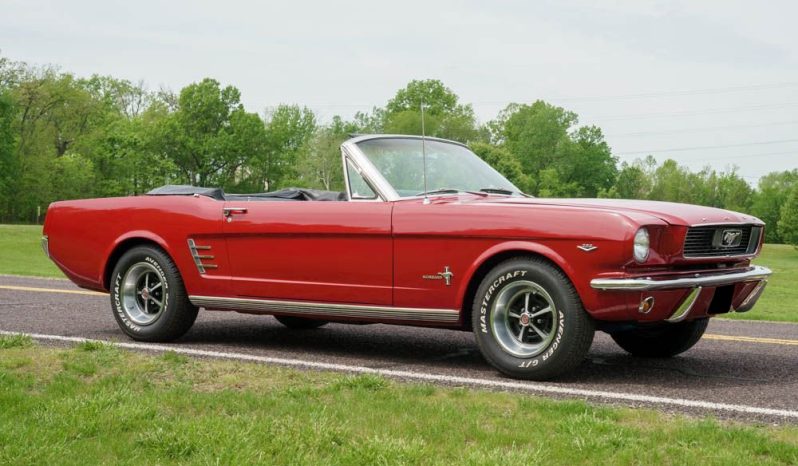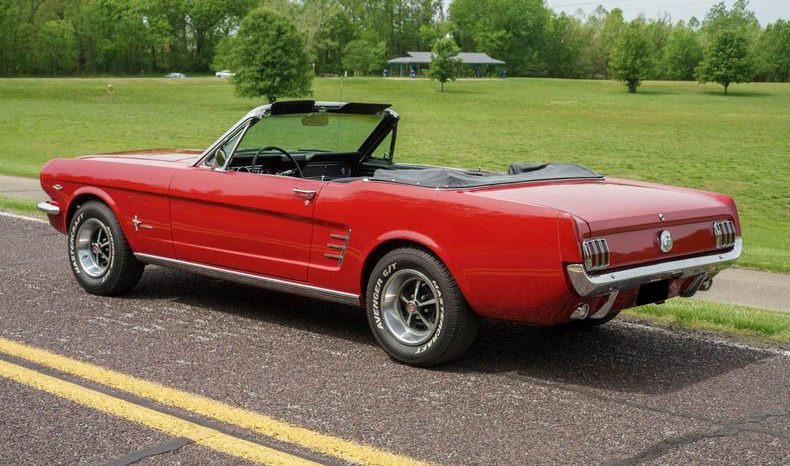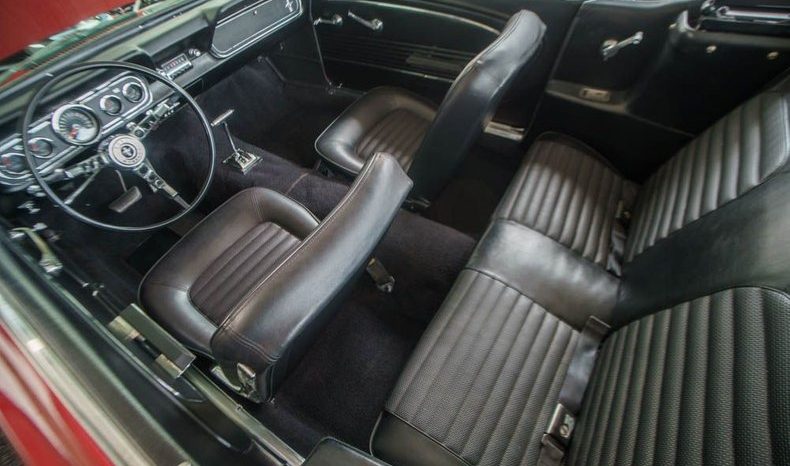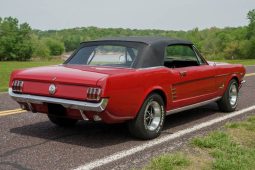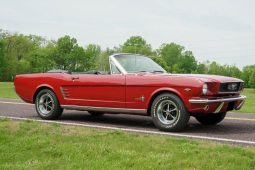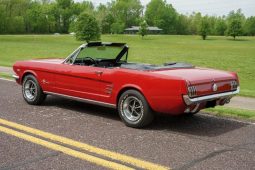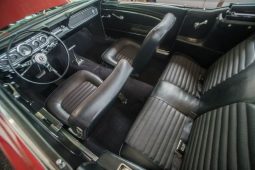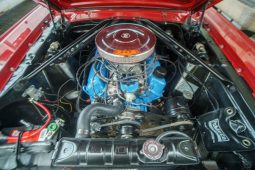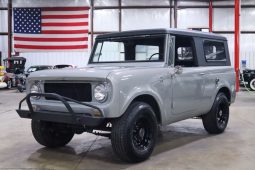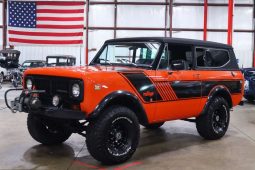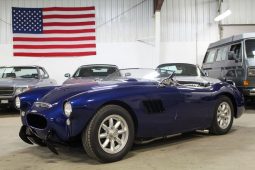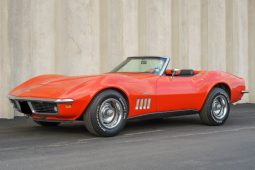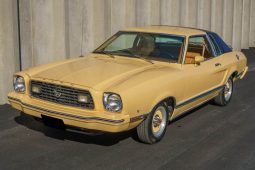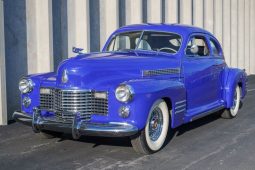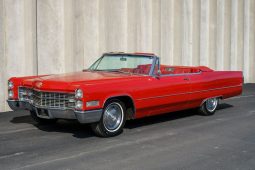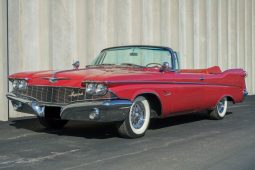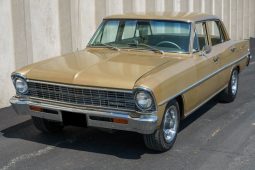As it marks its 60th Anniversary in 2024, the Mustang has proven itself to be the lone survivor of the car category it created in 1964 – the ponycar class.
This gorgeous example was made in July 1966. Finished in Candy Apple Red, this Mustang's paint and trim are in overall excellent order. The bodywork is straight and solid, and the engine bay is extremely tidy. The battery appears new, and the chrome bumpers fit tightly to the body. The new black, power-folding vinyl top looks great. Other new parts include carpet, paint, and brakes.
This pony rolls on radials, size 215/70R14 in front and 255/70R14 in back. Each one is mounted to a factory rally wheel. The tires are in very good order, while the wheels look great.
Under the hood is a 289 CID V-8 engine with a four-barrel carburetor breathing with upgraded aluminum intake and dual exhausts. The motor is backed by a three-speed automatic transmission and a 2.80:1 rear end. Driver convenience features include factory power steering.
Inside, the car's black vinyl interior is in fine form. The front bucket seats and rear bench look fabulous, as does the matching carpet. A three-spoke steering wheel faces the driver. The black dashboard and inner door panels look great, as does the floor-mounted shifter. A factory AM radio completes the interior.
The 1966 model debuted with moderate trim changes, including a new grille, side ornamentation, wheel covers, and gas cap. A new three-speed automatic transmission became available for the 225-horsepower version of the 289 CID V-8.
Many new paint and interior color options were available, as well as an AM/eight-track sound system and one of the first AM/FM mono automobile radios. The 1966 model year cars discontinued the previous instrument cluster, while the previously optional round gauges and padded sun visors became standard equipment. The Mustang would become the best-selling convertible in 1966, with 72,119 sold, beating the second-place car by almost 2:1.
The 1965 and 1966 Mustangs are differentiated by variations in the exterior, despite the similar design. These variations include the cove molding on the rear quarter panels behind the doors. From August 1964 production, the molding was a single vertical piece of chrome, while for 1966 models, the molding was smaller in height and had three horizontal bars extending forward from the design, resembling an “E.” The front intake grilles and ornaments were also different. The 1965 front grille used a “honeycomb” pattern, while the 1966 version was a “slotted” style.
Convertible competition to this Mustang in 1966 was sparse – only one other ponycar made that year, but it wouldn't offer a droptop model until 1967, along with stiff competition from other vehicles in the same category.

